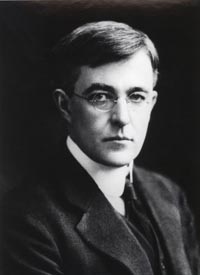Langmuir, Irving (1881–1957)

Irving Langmuir was an American physical chemist awarded the 1932 Nobel Prize in Chemistry for his work on thin films on solid and liquid surfaces (particularly oil on water), which gave rise to the new science of surface chemistry.
Langmuir invented a gas-filled tungsten lamp and showed that the shortness of the lamp's life was due to evaporation of the filament, and that this could be reduced by introducing nitrogen into the bulb instead of a high vacuum. He also developed the atomic hydrogen welding process and techniques to produce rain by cloud seeding. His researches in surface chemistry led to the general theory that chemical reactions occurred between adjacent surfaces that were absorbed.


